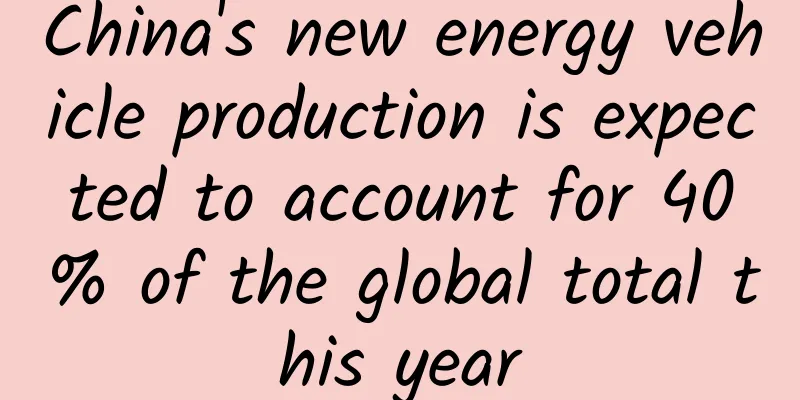Ultraman can win the Nobel Prize by fighting monsters!

|
The battle process between Ultraman and monsters is generally as follows: Ultraman and the monsters fight for three minutes. The seriously injured monster stood there obediently waiting to die. Ultraman fires a fatal beam to kill the monster. For Ultraman Tiga, his special move has a professional name: The Pelion rays . But no matter which Ultraman, Their special moves are all based on the Specium Ray . Today I will teach you step by step how to launch the highly lethal Spacium ray. 01 Laser generation biubiubiu~ We all know that light has the dual nature of wave and particle . We can think of a beam of light as being composed of many photons, each of which has a certain amount of energy. The greater the frequency of light or the smaller the wavelength of light, the higher the energy of the photon. The relationship between photon energy E and frequency ν and wavelength is as follows, where h is Planck's constant and c is the speed of light. The figure below lists the frequency (wavelength) spectrum of light. The colored part in the middle is the visible light we can see. On both sides of the visible light are ultraviolet light and infrared light . Higher frequency light is called X-rays and gamma rays , and lower frequency light is called microwaves, radio waves, etc. The frequency spectrum of light. Image source: Wikipedia The overall intensity of a beam of light is the power of the light, which represents the number of photons in the beam. In order to make light have a strong lethality, we must first ensure that the power of the light is very strong , which means that there are a large number of photons in a beam of light. This is easy to understand. For example, using a lens to focus sunlight can ignite flammable materials, and the brighter the light, the more dazzling it will be. Copyright image, no permission to reprint Secondly, we must ensure that the photon energy is large . We often say that ultraviolet radiation that is too strong can cause harm to the human body, or we see radiation hazards in the CT room of a hospital (the CT room uses X-rays), because the photon energy of these lights is too large. Spaciume rays can essentially be thought of as very high-energy lasers . When the laser is irradiated on an object, the atoms, ions or electrons inside the object will absorb the energy of the photons , the electrons will be ionized , and the energy will be transmitted between atoms. Then the temperature of the object will rise, causing it to melt, vaporize or even turn into plasma . When a strong laser is applied to a solid, it suddenly applies a violent energy disturbance to the local part of the solid. During the propagation of energy inside the solid, a stress wave is formed, which can cause the solid to break [1]. Therefore, there is a certain rationality in the plot that after Ultraman shoots a beam of light and hits the monster, the monster will explode into pieces. Laser is a strong light beam with strong monochromaticity (i.e. single frequency) and strong directionality . So how is laser produced ? At this time we can turn to Einstein for help. He proposed the concept of stimulated radiation of light, which is the basis for laser generation. Quantum mechanics tells us that inside matter, electrons are at discrete energy levels . When electrons are at a higher energy level, they will spontaneously transition to a lower energy level. During the transition, they will radiate a photon outward. The energy of the radiated photon is equal to the energy difference between the two energy levels . Schematic diagram of spontaneous emission This process is called spontaneous emission . The fluorescence emitted by phosphors that we see in daily life is an example of spontaneous emission. However, the photons of spontaneous emission cannot be collected into laser light. When we shine a beam of light from the outside, if the energy of the photon is greater than the energy difference between the two energy levels, the electron will absorb the photon and obtain its energy, jumping from the low energy level to the high energy level. This process is called stimulated absorption . Schematic diagram of stimulated absorption Here comes the point . When the energy of an external photon is equal to the energy difference between two energy levels and the electron is at a high energy level, the electron will jump to a low energy level under the disturbance of the external photon and radiate a photon . This process is called stimulated radiation . Schematic diagram of stimulated emission of radiation We can notice that originally we had one incident photon, but now two photons are emitted, that is, stimulated radiation enables us to obtain stronger light . Here everyone should pay attention to one thing: As mentioned earlier, as long as the electrons are at a high energy level, spontaneous radiation will occur. However, we do not want spontaneous radiation to occur . We hope that more electrons will participate in stimulated radiation to produce the desired laser. So how can we make the stimulated emission process more advantageous? The answer is: just make sure that the number of electrons at higher energy levels is greater than the number of electrons at lower energy levels. This is called population inversion [2]. However, electrons at high energy levels will always jump to low energy levels. So how can we ensure that there are always more electrons at high energy levels than electrons at low energy levels? You, as a smart person, must have thought of this: Since the electrons in the high-energy level are constantly being consumed, can't I find a way to replenish electrons to this energy level from another energy level? Congratulations, you have understood the principle of ruby laser . The ruby laser uses a three-level system , where the energy levels can be divided into E1, E2, and E3 from low to high [3]. Under the irradiation of xenon lamp: 1. The electrons in the ruby crystal that were originally in the ground state E1 are excited to the highest energy level E3 after absorbing the photons emitted by the xenon lamp. 2. The lifetime of electrons at the E3 energy level is extremely short, about picoseconds, and a large number of particles will spontaneously radiate from the E3 energy level to the intermediate energy level E2 . 3. The lifetime of electrons at the E2 energy level is relatively long, about milliseconds, so a large number of electrons will gradually accumulate at the E2 energy level, realizing the inversion of the number of particles at the E1 energy level and the E2 energy level . The electron transition process of ruby laser Therefore, the crystal will amplify and output the light component whose frequency satisfies hv=E2-E1. The wavelength of the output laser is 694 nanometers of red light . Now we have generated a large number of photons through stimulated radiation, so how do we turn them into lasers and output them to the outside world ? We can install two parallel mirrors at both ends of the laser working material (such as ruby). These two reflective surfaces form a resonant cavity . In this case, only light parallel to the mirror axis can be reflected back and forth inside [2]. Basic structure of laser The light passes through the working material and is enhanced by stimulated radiation, and the final emitted laser has a strong unidirectionality . From the above analysis, we can see that the strong unidirectionality of laser makes the photons confined in a very small space, that is, the number of photons in unit space is large , so the laser has very strong power. So, is that enough now? Ordinary lasers may be able to burn people, but compared to Ultraman's beam of light that can penetrate a hundred meters and the hard-bodied monster, our power is still not enough ! 02 Pulsed laser biu~biu~biu~ Now let’s welcome our protagonist: pulse laser . The laser we produced earlier is a continuous laser , which means that the energy distribution of the light beam is continuous. A pulsed laser is a beam of light that is composed of pulses one after another. The duration of a pulse is called the pulse width . Schematic diagram of pulse light time waveform We can imagine this: For a continuous beam of light, all the photons are evenly distributed throughout the beam, but for pulsed light, the photons only exist for the duration of the pulse . If the two beams have the same total number of photons, a pulse of the pulsed light will have more photons . Pulsed lasers have more photons per pulse That is to say, although the average power of the two is the same, pulsed light has a stronger instantaneous power than continuous light. It can be predicted that the narrower the pulse width of the pulsed light, the stronger the instantaneous power of the laser. Therefore, generating pulsed lasers with ultra-short pulse width is our next goal. So how do you generate pulsed light ? As mentioned earlier, the light generated by stimulated radiation oscillates back and forth in the resonant cavity to achieve amplified laser output. However, there must be losses in the resonant cavity. Only when the gain of the medium to light exceeds the loss can continuous laser output be achieved [2]. We can tune the losses in the resonant cavity . First, adjust the loss of the resonant cavity to a very large value so that the laser cannot generate laser light. In this way, a large number of excited state particles can be accumulated at the upper energy level of the laser, resulting in a large number of inversion particles. When the number of inversion particles reaches a threshold , the loss of the cavity is suddenly reduced, and a large number of excited state particles quickly complete stimulated radiation . Then, in the next pulse cycle, the same operation is performed again, thus generating a very narrow light pulse . Schematic diagram of adjusting the resonant cavity loss to obtain pulsed laser The pulse width of pulsed laser, which is generally achieved by changing the loss of the resonant cavity, can reach the nanosecond level. We can change the losses of a resonant cavity by placing an electro-optic crystal in it [2]. The so-called electro-optical crystal is a crystal in which when voltage is applied between two ends, the polarization direction of light passing through the crystal will change. At this time, if another polarizer with a polarization direction perpendicular to it is added, the light cannot pass through the polarizer and thus cannot oscillate back and forth in the resonant cavity. So how can we further generate lasers with shorter pulse width and stronger instantaneous power ? We know that light is an electromagnetic wave, and the light intensity is mainly the vibration of the electric field. The light whose vibration direction is parallel to the axis of the resonant cavity is called the longitudinal mode, and the light whose vibration direction is perpendicular to the axis is called the transverse mode. For example, the vibration of a spring is a longitudinal mode, and the vibration of a water wave is a transverse mode. The vibration of the electric field includes amplitude, vibration period, and phase. For a general laser, the vibrations of the light field inside it are completely different and the phases are random, so the modes do not interfere with each other. Now, we can add a modulator or something called a Kerr crystal to the resonant cavity to phase lock the vibration modes [4]. Then after a period of time, some vibration modes will meet at their respective maximum amplitudes, achieve superposition, and ultimately output a larger amplitude. Schematic diagram of phase locking between different modes to form a stronger pulse laser In this way, we have achieved mode-locked amplification of the laser. This method can realize pulsed lasers with pulse widths of picoseconds or even femtoseconds . But it is still not enough now, we still need more powerful lasers. We have achieved very strong instantaneous power by converting continuous light into femtosecond pulse lasers. So can we directly continue to amplify the femtosecond pulse lasers ? The answer is yes! Next we will use chirped pulse amplification technology to further enhance our Spaciume beam. We pass a laser beam through a set of prisms to stretch its pulse width so that its peak power becomes very low. Then we let it pass through a gain medium for amplification. Since we have reduced its peak power in advance, the laser will not be damaged during the enhancement process in the gain medium. After the laser is amplified by the gain medium, it is then passed through a set of prisms to compress its pulse width , which means that more light is compressed into a smaller area , greatly increasing the intensity of the femtosecond laser pulse. It is worth mentioning that this method also won the Nobel Prize in Physics in 2018. So Altman can win the Nobel Prize with this technology! 03 High harmonics biuuu~biuuu~biuuu~ We have now achieved very strong optical power, so how can we continue to improve our strength? Back to our initial idea, should we increase the energy of photons ? That is, we need to increase the frequency of light. In 1961, Franken et al. passed a beam of red light produced by a ruby laser through a quartz crystal and found that the output light turned into purple light [5]. From the spectrum, it can be found that the frequency of violet light is twice that of red light, which means that they have achieved frequency doubling of light. The phenomenon they discovered is called second harmonic generation . OK, it looks like we have achieved what we wanted: we increased the energy of the photons . End of this article... Just kidding, let's take a look at how the second harmonic is generated . As mentioned earlier, light is electromagnetic waves. In an object, the nucleus is positively charged and the electrons are negatively charged. When the electric field acts on the atom, the nucleus and electrons will move in two opposite directions. In this way, a dipole is formed. The dipole will generate an electric field that is superimposed on the external electric field, thereby changing the magnitude and direction of the external electric field. This process is the polarization process of the electric field. For the entire solid, the contribution brought by the dipole is called polarization intensity . Through some complex solutions, we can know that the expression of polarization intensity P can be written as the sum of powers of the external electric field E. The power index corresponds to the order of nonlinear effects, and the preceding coefficient is called the nonlinear coefficient [6]. Relationship between polarization intensity and applied electric field Second harmonic generation is a second-order nonlinear effect. In addition, there is third harmonic generation, which is a third-order nonlinear effect, that is, the frequency of the outgoing light is three times the frequency of the incident light. In solids, nonlinear effects can generate photons with frequencies several times higher than that of ultraviolet light. But it is still not enough. Can we continue to improve our strength? OK! This method uses femtosecond lasers to ionize gas to generate high-order harmonics . This method can enhance the frequency by dozens of times and even generate pulsed lasers in the X-ray band [7]. The process goes like this: Femtosecond pulsed lasers are used to act on gas atoms to ionize the electrons inside them. The ionized electrons are accelerated by the femtosecond laser electric field to obtain very high energy. The electrons recombine with atoms again, and the sum of the kinetic energy obtained by the electrons in the light field during the recombination process and the transition energy from the continuous state to the ground state (equal to the ionization energy) is radiated in the form of high-order harmonic photons. Schematic diagram of the three steps of high-order harmonic generation. The two upper rightmost figures show the collision process of accelerated electrons with other electrons or atoms, and the bottom figure shows the high-order harmonic radiation from the recombination of accelerated electrons and atoms. Image source: Reference [5]. In addition, people have found that the pulse width of the extreme ultraviolet pulse light radiated by the high-order harmonic generation process can reach the attosecond level. In this way, we not only greatly enhanced the energy of Spaciume light photons , but also obtained attosecond lasers with shorter pulse widths than femtosecond lasers , further enhancing the instantaneous power of the light . In this way, such a Spacium ray can already achieve extremely strong destructive power . That’s all for today’s article “The Basics of Ultraman’s Special Moves – Specium Ray”. Have you learned it? References: [1] Research progress on the damage mechanism of high-intensity laser, Zhou Yichun et al., Mechanics and Practice, Vol. 17, No. 1, 1995. [2] Principles of Lasers, Orazio Svelto, 1998 4th edition, Springer. [3] Ruby Laser, Department 5, Northwest Institute of Telecommunications Engineering, Laser and Infrared, 1978, (04) [4] Laser Principles, Zhou Bingkun et al., 6th edition, National Defense Industry Press, 2009 [5] Generation of optical harmonics, PA Franken et.al, Phys. Rev. Lett. 7, 118-119 (1961). [6] Nonlinear Optics, Shi Shunxiang et al., 2012, 2nd edition, Xidian University Press [7] Technical principles and progress of attosecond pulse generation, Wei Zhiyi et al., Science Bulletin, Vol. 66, No. 8, 2021: 889 ~ 901 Source: Institute of Physics, Chinese Academy of Sciences Some of the pictures in this article are from the copyright library Reproduction of image content is not authorized |
<<: Half-Hour Comic History of China - Xia Dynasty: Listen, emperors, I will teach you a lesson!
Recommend
What’s the most effective way to sell products through short videos? Just read this one
Using short videos to sell goods on platforms suc...
How will China's robotics industry take the lead in the battle for discourse power under the market size of 600 billion yuan?
Artificial intelligence and the robotics industry ...
iPhone 7 performance test: A10 processor beats all other processors
We have experienced the powerful performance of iP...
Accidents happen frequently. Please keep these safety tips for popular online projects →
February 11 Chongqing Yubei District Shengming Am...
The ideal product operator has this kind of thinking...
Product operation is inseparable, and a good prod...
13 excellent Android security apps
[51CTO.com Quick Translation] AV-TEST Institute i...
List of currently closed communities in Shenyang in 2022: How many communities are closed now? Attached is the latest list!
Recently, new cases have appeared in Shanghai, Be...
2016 Q1 Omni-channel user rankings: stores, browsers, videos, live broadcasts, and social media!
Recently, the authoritative data company QuestMob...
Military Advisor's Mansion Liu Jinyi Yin Pan Qi Men Elementary and Intermediate Class
Resource introduction of Liu Jinyi's Yin Pan ...
2022 National Trend Marketing Rules!
Although the issue of national trends is always m...
Can't take selfies without a front camera? Huawei Honor 7i hands-on experience
On August 20, 2015, the Chinese Valentine's D...
Messi arrived in Beijing and was warmly welcomed by fans. From a psychological point of view, what are we chasing when we chase stars?
On the evening of June 15, the Argentine national...
Take you into the secrets behind the red envelopes in Moments photos!
The WeChat Moments photo red envelopes were in fu...
How much does it cost to develop a watch mini program on the market in Hexian County?
In order to better penetrate into various industr...
400 activation and charging standards, how much does it cost to activate a 400 phone number?
400 telephone numbers are not completely free num...









